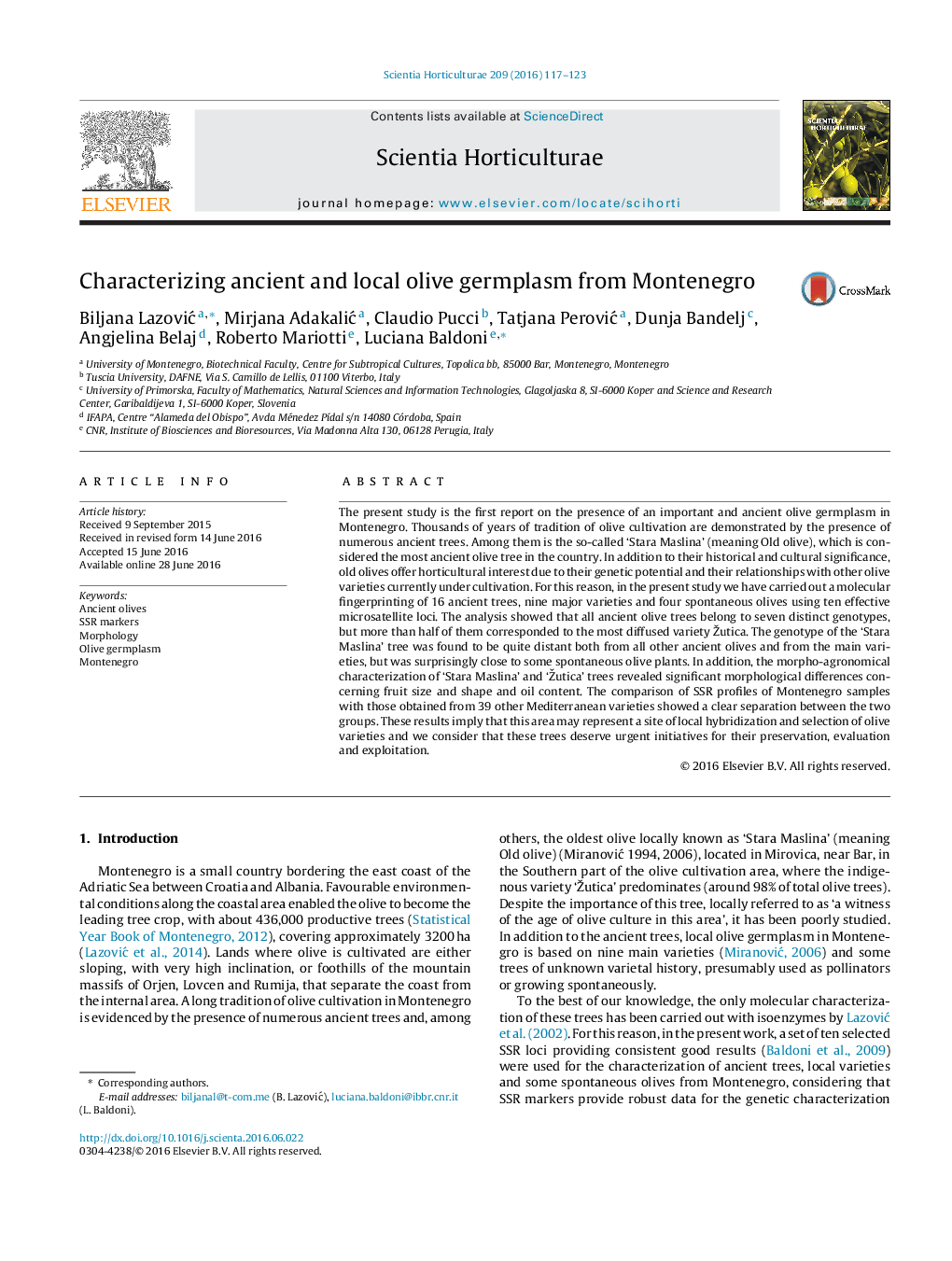| کد مقاله | کد نشریه | سال انتشار | مقاله انگلیسی | نسخه تمام متن |
|---|---|---|---|---|
| 4565959 | 1628789 | 2016 | 7 صفحه PDF | دانلود رایگان |
• Molecular and morphological evaluation of Montenegro olive genotypes.
• Clear discrimination by SSR markers between Montenegro olive samples and Mediterranean cultivars.
• Preservation and valorization of monumental ancient olives trees.
• Providing knowledge on local olive germplasm to contribute to the renewal of Montenegro olive production.
The present study is the first report on the presence of an important and ancient olive germplasm in Montenegro. Thousands of years of tradition of olive cultivation are demonstrated by the presence of numerous ancient trees. Among them is the so-called ‘Stara Maslina’ (meaning Old olive), which is considered the most ancient olive tree in the country. In addition to their historical and cultural significance, old olives offer horticultural interest due to their genetic potential and their relationships with other olive varieties currently under cultivation. For this reason, in the present study we have carried out a molecular fingerprinting of 16 ancient trees, nine major varieties and four spontaneous olives using ten effective microsatellite loci. The analysis showed that all ancient olive trees belong to seven distinct genotypes, but more than half of them corresponded to the most diffused variety Žutica. The genotype of the ‘Stara Maslina’ tree was found to be quite distant both from all other ancient olives and from the main varieties, but was surprisingly close to some spontaneous olive plants. In addition, the morpho-agronomical characterization of ‘Stara Maslina’ and ‘Žutica’ trees revealed significant morphological differences concerning fruit size and shape and oil content. The comparison of SSR profiles of Montenegro samples with those obtained from 39 other Mediterranean varieties showed a clear separation between the two groups. These results imply that this area may represent a site of local hybridization and selection of olive varieties and we consider that these trees deserve urgent initiatives for their preservation, evaluation and exploitation.
View of the ‘Stara Maslina’ ancient olive tree (Mirovica, Bar, Montenegro).Figure optionsDownload as PowerPoint slide
Journal: Scientia Horticulturae - Volume 209, 19 September 2016, Pages 117–123
